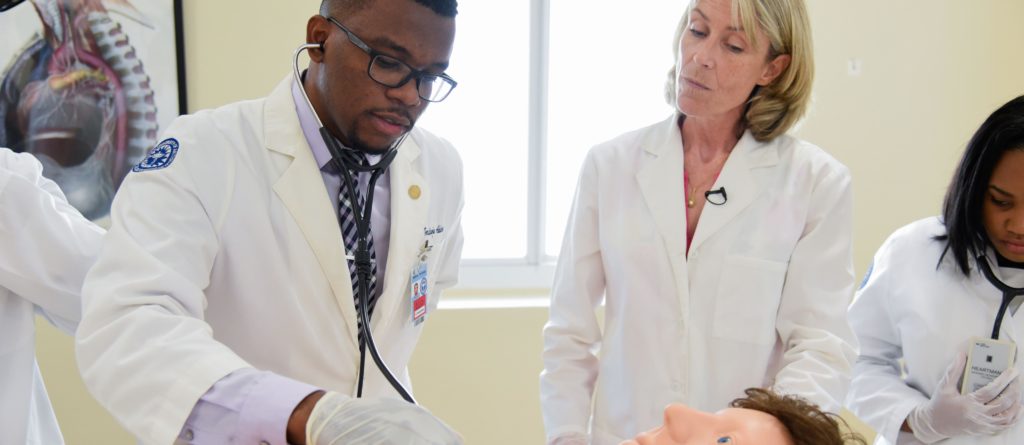
Recent stories have brought to light just how competitive it is for even the most privileged students to get accepted into college. Wealthy parents have been charged with carrying out extensive admissions fraud, with the help of coaches and college prep executives, to get their children into prestigious universities.
These stories bring up bigger questions about our higher education system: Are standardized tests worth keeping as an admissions measure when they only benefit the privileged? When the top 1% recognize how difficult it is to get into college, what does that mean for students who don’t come from affluent backgrounds? What obstacles must underrepresented minorities overcome to be admitted into undergraduate programs, let alone medical school?
Research indicates that high-income students reap academic advantages from an early age. Parental income and child achievement have become more closely linked in recent decades, and income is now a strong predictor of student success.
There has been a movement to decrease the importance of standardized tests like the SAT and the ACT in undergraduate admissions. Around 1,000 colleges and universities in the U.S. now have a “test-optional” policy, according to FairTest, a group that believes the tests are racially and culturally biased. Last year, the University of Chicago eliminated its standardized test requirement to “enhance the accessibility of its undergraduate College for first-generation and low-income students.”
Significant race gaps on standardized tests have persisted for years. Black-white score gaps on the SAT remained steady from 1996 to 2015. While the mean score on the SAT math section is 511 out of 800, the average scores for blacks (428) and Latinos (457) are much lower than those for whites (534) and Asians (598). Closing this gap could dramatically increase black college graduation rates.
Income and race disparities are sharply defined in medical school populations. According to data collected by the Association of American Medical Colleges (AAMC), a majority of medical school students have parents with graduate degrees. Another AAMC report shows that the median income of matriculating students is $100,000. To put that into perspective, the median family income at the time of the report in 2006 was $48,451. The average medical student comes from a family of above-average wealth.
AAMC data reveals that though the U.S. population is 13% black, only 4% of doctors are black. Only 4% of all faculty members at American medical schools are black. The huge income gap between black and white families has widened since the 1950s. The costs of medical school, along with the fact that medical students will defer their earning potential for many years of schooling, may be another deterrent to black students interested in medical careers.
But while income and race disparity in education continues, doctors in the U.S. are caring for an increasingly diverse group of patients, and it is more important than ever to reflect that same diversity in medicine. Research has shown that having more physicians of color can help improve health outcomes for patients.
Medical schools should be making it more accessible for students from diverse backgrounds – not just wealthy, white students. But in fact, it’s more difficult than ever to be accepted into medical school.
A growing number of applicants is increasing admissions competition. Data from the AAMC shows that 10,000 more people applied to medical school during the 2018-2019 school year than a decade before, approximately a 25% increase in applicants. Medical schools have notoriously low acceptance rates, admitting less than 7% of all applicants, according to one survey. And yet, medical school graduation rates have remained high for decades (above 80%). Once students make it into medical school programs, they tend to stay there until they complete their degree.
The U.S. is experiencing a significant physician shortage that must be addressed. The deficit is projected to reach up to 120,000 physicians by 2030, which will have serious consequences for patient care, particularly for underserved populations.
U.S. medical schools require that all students sit for the MCAT. For many schools, MCAT scores are a critical component in admissions, but the MCAT does not measure if someone will be a good doctor or not. A Belgian study found that a personality test was a much better predictor of a student’s success in medical school than the MCAT. Personality traits like being conscientious, open, and agreeable were strong indicators of success.
Leaders in higher education have a decision to make. Do they want to continue with the status quo, furthering inequalities in admissions processes? Or do they want to explore a more holistic approach to evaluating prospective students. Medical school admissions policies that judge applicants by who they are and what they have to offer in the future – not just what test score they received – will work to combat the imminent physician shortage, increase the presence of underrepresented groups in medicine, and provide better care for patients.








